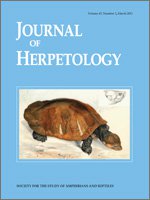Invasive species are a major threat to biodiversity and economic interests, with many introductions resulting from actions of people involved in pet and ornamental plant businesses. Invasive species eventually end up in the care of the general public, with most costs born by society rather than businesses or owners: a classic economic externality. Although standard economic instruments used to address externalities are useful, they require considerable extension in this case. Simple taxation of the trade has been suggested and can reduce the volume of trade, but taxes do little to discipline the riskiest actors in the market. Using reptiles and amphibians as our focus, we provide an outline for a mechanism addressing invasive species issues, focusing primarily on the local level. We propose to collect funds from the trade and apply them specifically to support (1) a national resource center offering information and training; (2) programs to professionalize local education and response teams, focusing on pet store owners, hobbyist organizations, and first responders; (3) an incentive program to encourage pet stores to take back unwanted animals; (4) a tracking system for identifying and penalizing owners of newly released animals; and (5) a rapid-response system to address newly reported invasives. Participation by local entities helps them avoid uniform policies from the national level that are typically both more onerous and less effective. To provide an additional incentive for the industry at large to participate in the process, the level of taxation could decrease as problems diminish.
How to translate text using browser tools
1 March 2011
Reducing the Risk of Biological Invasion by Creating Incentives for Pet Sellers and Owners to Do the Right Thing
Gad Perry,
Michael Farmer
ACCESS THE FULL ARTICLE

Journal of Herpetology
Vol. 45 • No. 1
March 2011
Vol. 45 • No. 1
March 2011




